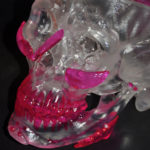
In reality, the rejection of an implanted synthetic material (that has been evaluated and approved for human implantation by the FDA), in the most scientific sense, does not happen. A true rejection reaction in humans is an autoimmune response to an ‘implant’ that is composed of live or organic material. Therefore, you will develop a rejection or autoimmune reaction, for example, in any type of organ transplant which is from other human or animal origins. Your body’s cells mount a massive response to what it recognizes as foreign or an invading organic source. The body is quite smart and protective as this type of response is necessary for survival.
Synthetic implants are composed of inorganic materials, which do not cause a true allergic or autoimmune response. These are not live materials and were never composed of living organic materials. As a result, they can not elicit an allergic response. They may never become part of you or integrate into your body’s tissues, but they can safely occupy a space to do their job. Synthetic implants, while not causing allergic responses, can cause a different set of problems which patients mistakenly interpret as ‘rejection’.
Synthetic implants can get infected, exposed, or migrate, all of which are complications of the surgical implantation process not due to rejection. If bacteria inadvertently get on the surface of the implant, an infection can later develop. Most implant infections occur within weeks of the surgery as it takes time for the bacteria to multiply and become evident. Synthetic implants can migrate or move from their location where they were surgically placed if the implant material is very smooth or the tissue pocket into which it is placed is very big. This potential migration can be eliminated if the implant is secured into its desired location by some method such as sutures or metal screws. Implant exposure can result from migration of the implant, getting close to the original incision through which it is placed. Or implant exposure can result from not having enough good tissue closed over it or tissue that breaks down over the implant due to too much pressure that the implant exerted on it or the overlying tissue is of poor quality and it doesn’t heal well and then breaks down, thus exposing the implant.
The patient will understandably interpret these synthetic implant complications as ‘rejecting the implant’. In reality, the patient’s body has little to do with the development of these complications. They are more a function of surgical technique and not due to a patient’s immune response to them. The risk of these potential implant complications can be reduced by pre-surgery antibiotics, a properly sized implant that does not stress the surrounding tissues, and careful surgical implantation technique.
Dr. Barry Eppley
Indianapolis, Indiana


